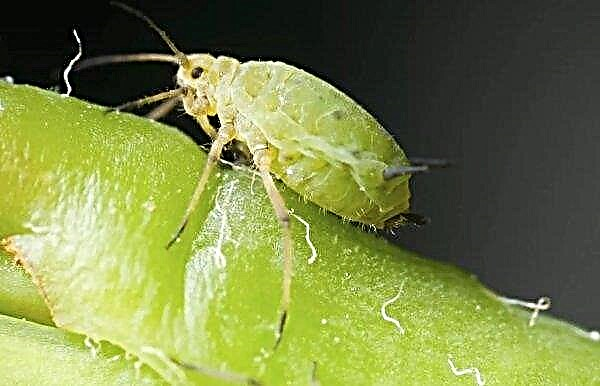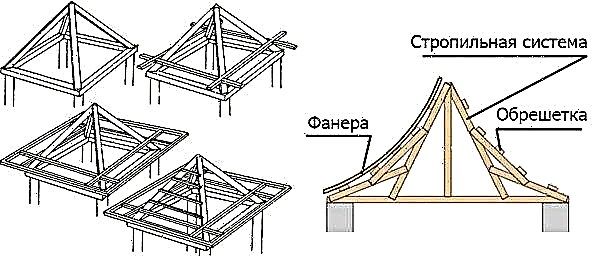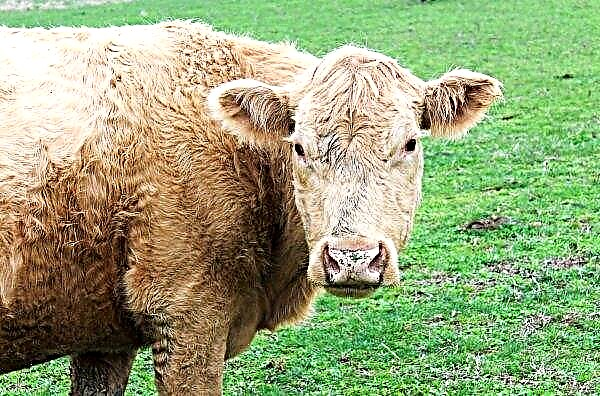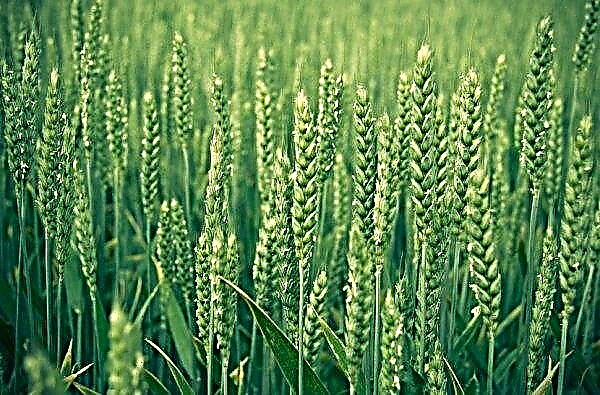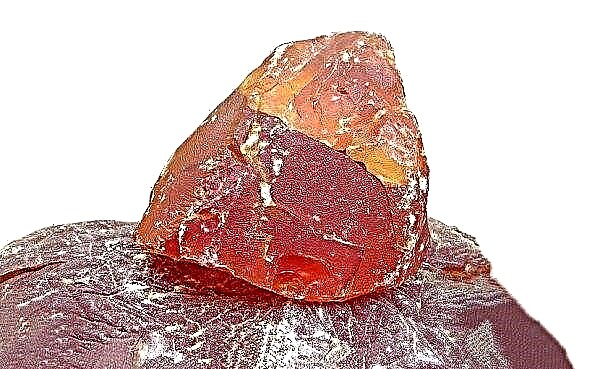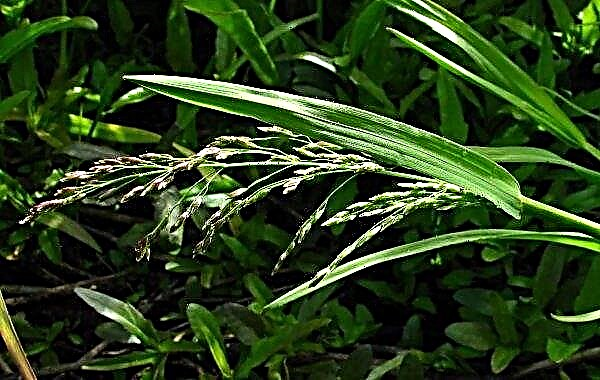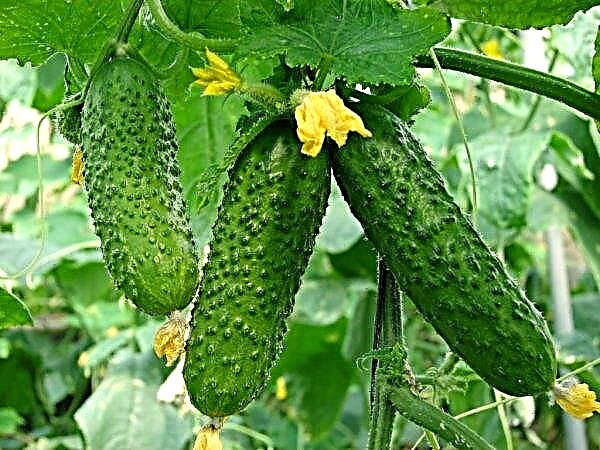Hydrangea bushes can decorate any garden, because they bloom unusually beautifully. The large-leaved variety Schloss (Castle) Wackerbarth has a very interesting color. The article will discuss what features this variety has, how it is used in landscape design, as well as the intricacies of growing a plant.
Grade description
Hydrangea macrophylla Schloss Wackerbarth differs from other varieties in that the color of its petals changes over time and consists of five colors. During blooming, the middle of the flowers are white, the petals at the base are red-crimson, and along the edge are bright yellow or lemon. A little later, the midpoints bloom in the form of miniature blue flowers with white stamens inside.
Blue partially replaces raspberry, which moves closer to the edge, and lemon remains only at the ends of the petals, becoming lime green over time. It is for this property that the large-leaf beauty Schloss Wackerbarth is called the "chameleon".
The large-leaved hydrangea variety Schloss Wackerbarth is a shrub whose height reaches a little more than a meter, and the same in diameter. Sometimes shoots can grow up to 2 m, but this is very rare. The first year they are green, in addition, they are quite tender, but already from the second year they begin to become covered with gray bark and become very durable.Important! The intensity of the blue color of the petals depends on the acidity of the soil: the higher it is, the more this particular color in the flower.
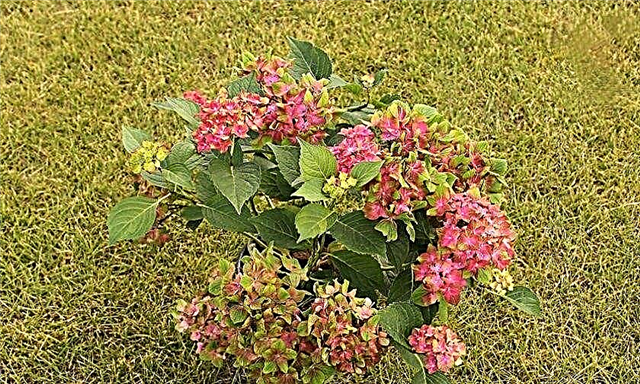
The leaves are bright green, large, slightly pointed, petiolate, located opposite. Inflorescences are voluminous, have the appearance of a hemisphere. They consist of many small flowers with 4 petals, pointed at the edge. Inflorescences appear on last year's shoots, and, unlike other varieties, only on those that are formed from the upper buds.
Wakerbart Castle blooms from July to October, which is a long flowering period. At the end of this period, bolls are formed that contain many miniature seeds.
Landscape design application
Since this variety is one of the most beautiful ornamental plants, it is often used by landscape designers when planting greenery. These unusual flowers look good both in single plantings and in group ones.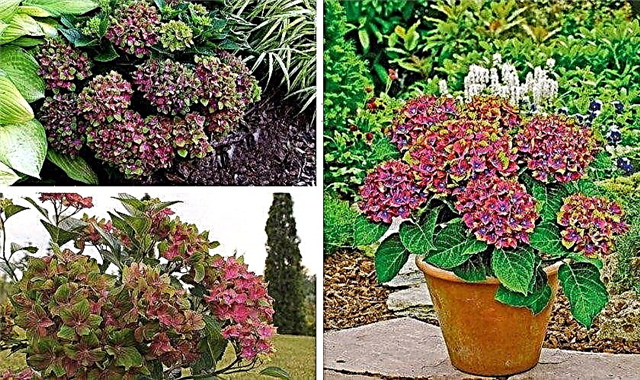
They are planted in greenhouses, grown on balconies as a pot plant. Wackerbart Castle also creates attractive hedges, which is why it is used for zoning garden areas and as a decoration for park paths. And even if you plant this colorful hydrangea on a flower bed with a single shrub, it will look no less original.
Landing
Plant hydrangea Wakerbart Castle is desirable in the spring, because it does not tolerate wintering, so the fragile seedling may not take root and freeze. But if planting is carried out in regions with a relatively warm winter, it is also possible in the autumn period.
Did you know? Buddhists on the birthday of Buddha decorate a small temple with hydrangea flowers.
Seat selection
The place for planting the variety should be well protected from drafts, which can damage delicate shoots and flowers. Schloss Wackerbart reacts poorly to the effects of cold winds, so you need to either find a place with a natural fence, or cover the young seedlings with a protective fence.
 Direct sunlight is also not very useful for hydrangea shrubs, for this reason it is advisable to provide them with less aggressive lighting. The best option would be partial shade or scattered sunlight, which is achieved through the neighborhood with tall trees with openwork crown.
Direct sunlight is also not very useful for hydrangea shrubs, for this reason it is advisable to provide them with less aggressive lighting. The best option would be partial shade or scattered sunlight, which is achieved through the neighborhood with tall trees with openwork crown.
Soil preparation
Hydrangeas are more suitable for slightly acidic or neutral soil. To fill the hole in which the bush will grow, you need to prepare a special soil mixture consisting of equal parts of peat and humus. You can make it even simpler - buy a substrate for planting flowering plants in a specialized store. 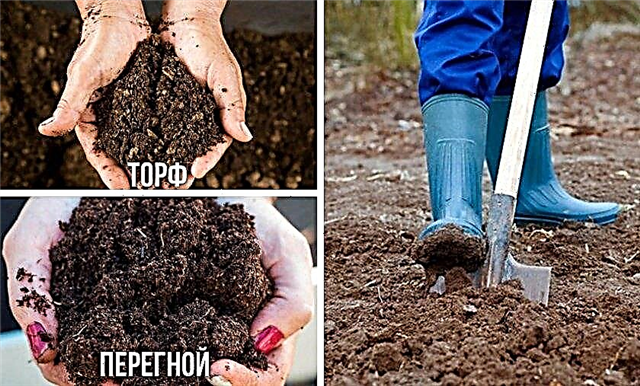
The place where you plan to plant hydrangea Wackerbart Castle must be dug up in advance so that the earth around the bushes is loose and allows air and water to pass through well.
Landing process
The process of planting hydrangea large-leaved Schloss Wackerbart is carried out in the following sequence:
- Dig the holes about 30 cm deep and the same in diameter one day before the procedure.
- Make a drainage layer of broken brick or small stones.
- Pip a third bucket of nutrient soil mixture into each hole.
- Pour abundantly with settled or rain water.
- Place the seedlings in the holes and sprinkle them with the rest of the mixture so that the root collar is at the level of the ground.
- Mulch the soil around the bushes with peat or sawdust and water again.
 When digging up planting pits, you need to remember that the distance between them should be at least one meter, because adult bushes are quite voluminous.
When digging up planting pits, you need to remember that the distance between them should be at least one meter, because adult bushes are quite voluminous.
Care
To ensure the most comfortable conditions for the growth and development of hydrangea Schloss Wackerbart, it is necessary to water, feed, loosen and carry out sanitary and shaping pruning on time. And also do not forget to prepare the shrub for winter.
Did you know? In Japan, a hydrangea flower is considered a symbol of sincerity of feelings and manifestations of a special cordiality.
How hydrangea winters
Around the middle of August, when the last top dressings are introduced, the hydrangea Schloss Wackerbart begins to enter a dormant state. At this time, it must be stopped watering so that new flower buds begin to form. All dried inflorescences are cut so that they do not spend energy.

Since this variety does not tolerate a decrease in temperature, and does not survive in frosts below –18 ° C, care must be taken about how the bushes will winter. To do this, they are spudded to a height of about 30 cm and the soil under them is covered with peat, sawdust, leaves or grass.
In northern regions with quite severe winters, hydrangea needs more serious preparation for wintering. In autumn, before the cold has come, you need to cut off all the leaves, leaving only a few pieces on top of each shoot. This will help young branches to numb and prepare for the cold as soon as possible. 1- tilted shoots, 2 -humping, 3- spruce branches, 4- lutrasil, 5- stone. Branches on which there was no ovary can be cut in half. After this, the plant is bent to the ground, near the roots it is covered with lapnik, and where the tops are covered with conifers, peat is poured into the center of the bush. Further, this whole structure is wrapped in roofing material. Such protection, as a rule, is able to protect bushes even from severe frosts.
1- tilted shoots, 2 -humping, 3- spruce branches, 4- lutrasil, 5- stone. Branches on which there was no ovary can be cut in half. After this, the plant is bent to the ground, near the roots it is covered with lapnik, and where the tops are covered with conifers, peat is poured into the center of the bush. Further, this whole structure is wrapped in roofing material. Such protection, as a rule, is able to protect bushes even from severe frosts.
Watering and loosening
After planting, hydrangea should be watered well so that its root system takes root in a new place and begins to grow. Subsequent watering during the warmer months must be carried out once a week. It will be enough 1-2 buckets of water for each bush. If it often rains, you can water less often.
 Water must be settled, because hydrangea does not tolerate the presence of lime in the soil, which gets there with tap water. You can also use rain, it is excellent in composition.
Water must be settled, because hydrangea does not tolerate the presence of lime in the soil, which gets there with tap water. You can also use rain, it is excellent in composition.
Loosening the soil around the plant must be carried out at least 2 times during the summer, so that moisture is better retained, and weeds are removed that interfere with normal growth and development. Loosening should not be deeper than 5-6 cm. For even better results, it is advisable to mulch the soil under the bushes with peat, sawdust or dry grass.
Top dressing
To improve the appearance of the plant and help it bloom for a long time and plentifully, it is necessary to add top dressing containing the necessary nutrients to the soil. Hydrangea Wackerbarth Castle is fertilized 3 times per season.
Top dressing, as a rule, is carried out according to this scheme:
- in the spring before the start of growth, urea is added in an amount of 20 g per 1 m², as well as about 40 g of potassium sulfate;
- during the appearance of buds, the plant needs to be fed with potash and phosphorus fertilizers, which are part of a special complex designed for flowering shrubs;
- in the middle and end of summer, two more dressings are carried out, the same as in early spring, to provide hydrangea with a supply of the necessary substances for growth and flowering next year.
 The last time a year fertilizers are applied no later than mid-August, and then the plant does not need additional fertilizing, because it should gradually enter a dormant state.
The last time a year fertilizers are applied no later than mid-August, and then the plant does not need additional fertilizing, because it should gradually enter a dormant state.Pruning
All varieties of large-leaved hydrangea practically do not need pruning. It is not recommended to remove old shoots, unlike other species, because in this case the plant will not bloom.
The main thing is not to forget to carry out sanitary pruning, during which it is necessary to remove all dry, diseased and damaged branches. And, of course, it is imperative to remove all the inflorescences, but only after they are completely dry.
Breeding
To propagate hydrangea Wackerbart Castle, you can use the division of the bush or green cuttings. To divide the bush, you need to carefully dig it out and separate a small part, being careful not to damage the roots remaining in the ground.
Important! Before planting seedlings on the street, it is necessary to conduct hardening. To do this, they are briefly taken out to fresh air.
Cuttings are carried out in the spring before flowering in the following sequence:
- Cut young cuttings with flower buds on top of the shoots.
- At an acute angle, cut off the top, leaving only a couple of sheets.
- Put the cuttings soaked in a growth accelerator.
- Treat with dry “Kornevin” to improve the formation of the root system.
- Take one part of sand and two parts of peat, water well and plant green cuttings 2-3 cm deep into this mixture at a distance of 5 cm from each other.
- Spray with water and cover with foil.
- Clean in a warm place, inaccessible to sunlight.
The cuttings will take root for about a month. You need to water them every day if the weather is hot. During this time, new sheets will appear, and the film can be opened. After that, young seedlings are transferred to penumbra and grown in separate pots or containers for about a year, after which they can be planted in a permanent place on the street.
Grade Diseases and Pests
Hydrangea Schloss Wackerbart is sick or attacked by pests only if she is not well cared for.
The most common diseases affecting this variety:
- chlorosis - a consequence of the ingress of lime into the soil;
- leaf burnsappearing if the plant is in direct sunlight for a long time;
- wet blackening of leavesarising from excess moisture;
- leaf curl - the effect of herbicides;
- fungal diseases such as rot, rust and powdery mildew.

Fungi, as a rule, are treated with fungicidal preparations. You can also use them to carry out preventive spraying of bushes. All other problems in growing bushes are eliminated by improving the conditions for their growth.
Sometimes harmful insects settle on hydrangeas, which, like diseases, can damage leaves and flowers. The most dangerous of them are aphids, slugs and spider mites. You can get rid of them only with the help of special chemicals, therefore it is better to prevent their appearance in advance by conducting regular inspections of plants and removing diseased and dry parts.
Large-leaved hydrangea Schloss (Castle) Wackerbarth is a very beautiful, and at the same time relatively unpretentious plant. If you fulfill the rather simple conditions for its planting and care, it will be able to please you with unusual and long flowering for a long time.

